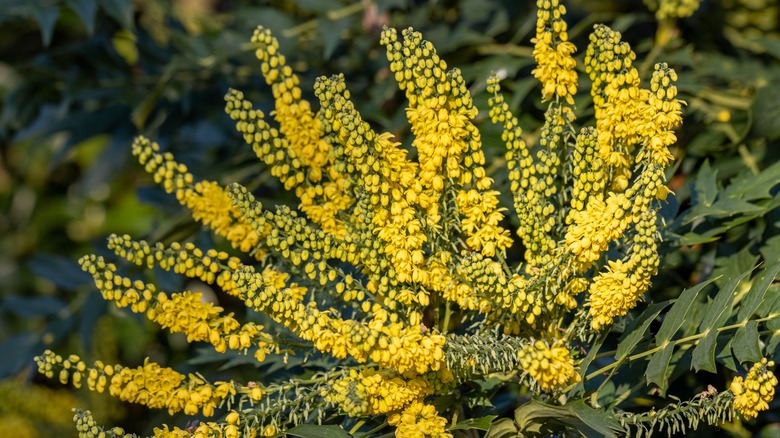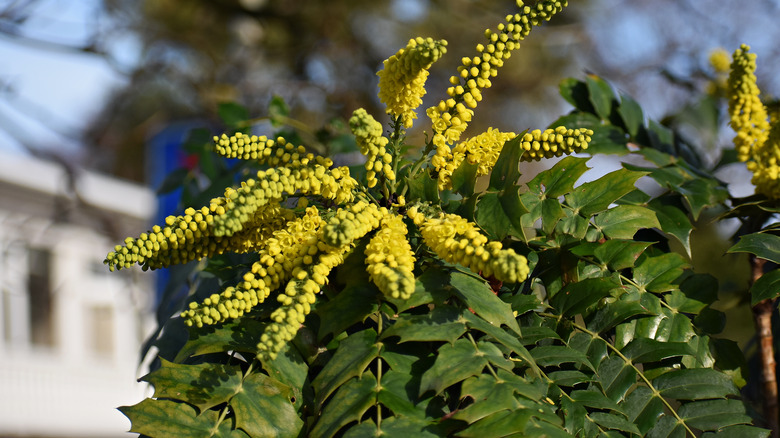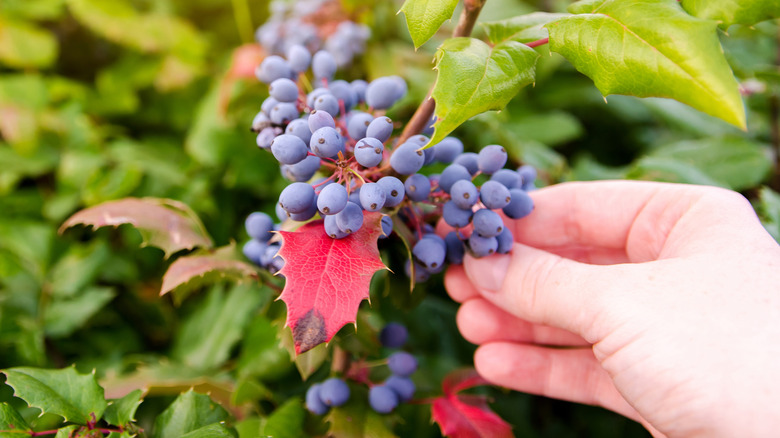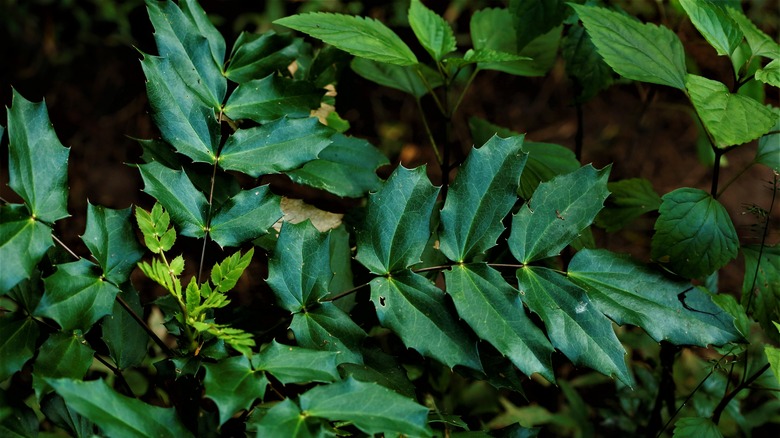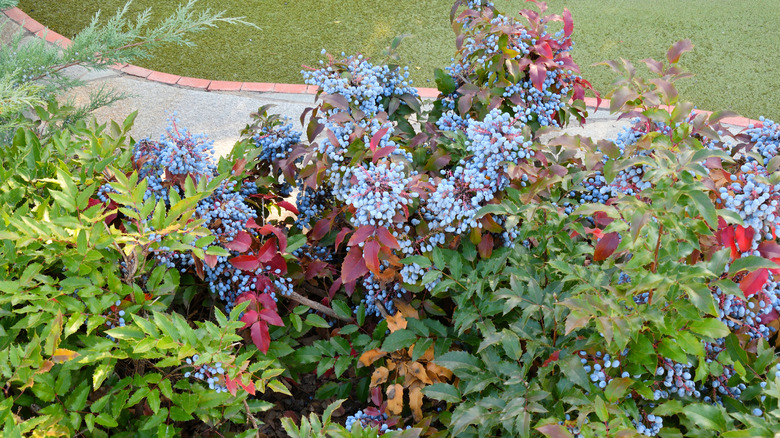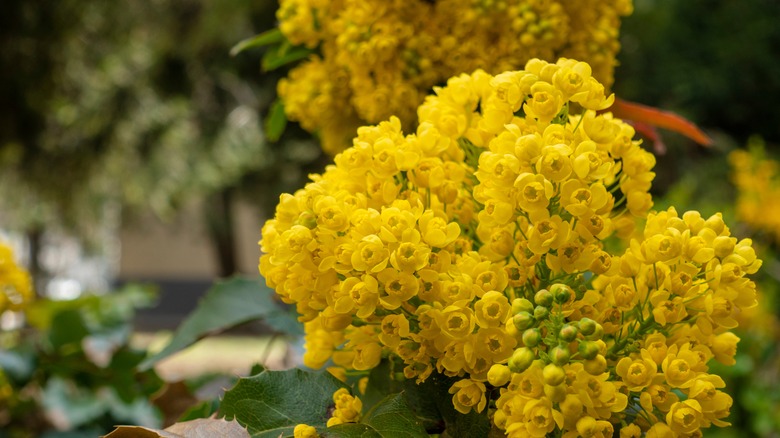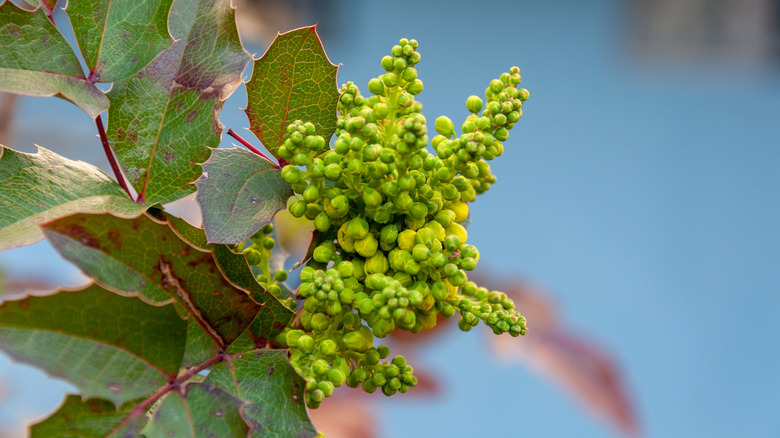Mahonia: Everything You Need To Know Before Planting
The mahonia plant is a stunning, thickly textured shrub that displays eye-catching yellow buds and a truly notable shape found in many areas around the northwestern United States and parts of British Columbia. This shrub is recognized by its rounded or somewhat cone-shaped clusters of sunshine-colored blooms and thrives in the hardiness zones 6 through 8.
Also known as the Holly-leaf Oregon grape or the Holly-leaved Barberry, its botanical name is Mahonia aquifolium. According to the Farmer's Almanac, it blooms in yellow clusters during the spring months but in the winter is known for producing berries that vary between a blue and black hue. Its different blooms mean it offers coloring and a desirable appearance year-round, giving a garden a more tropical feel during the warm months and a festive vibe during the cold ones. Planting this wonderful shrub in the yard will allow all to enjoy its vibrant aura without worrying about missing out on its blooms during the seasons.
How to use mahonia in the garden
Adding an attractive and aesthetically pleasing shrub to your garden will enhance the overall aesthetic, making mahonias an ideal addition. They are great for filling in shadowy areas because they can grow in partially shaded conditions. Using them as a barrier within the garden or planting foundations for the rest of the space will help fill spots that other plants can't thrive in. According to Gardenia, they suit woodland yards, too, and grow well between rocky areas.
If you have a rock garden, integrating mahonia in between the crevices and cracks can be a great way to fill empty space, Gardenia says. They are also helpful in controlling erosion and make a great cover for your garden's grounds. While the Mahonia aquifolium is excellent for most yards, you can also get Mahonia repens (Creeping Mahonia), which only reaches about 1 foot in height. This species is ideal for areas that need excessive ground cover, as it can grow 3 feet wide.
How to grow mahonia
Mahonia is best planted in the spring or fall, but ensure you avoid attempting to grow it during a frost or when it gets too hot. To get your shrub started yourself from a rootball, Gardener's World recommends digging a large, generously spaced hole and filling it with compost and mycorrhizal fungi, which can be made at home with some starter soil and plant species (via Simplify Gardening). Then, place the ball right underneath the soil, ensuring it is firm and stable.
Use acidic soil that is also humus-rich and well-drained. The ground needs to be moist, so the roots can thrive during their first year. Always give these shrubs partial shade so they don't succumb to the sun's harsh rays, especially during their first year, and always protect the leaves from harsh winter winds so the detrimental gusts that blow do not affect them. Winter winds can create leaf burn, so protect your mahonia from this type of exposure. After their first trip around the sun, these shrubs will become highly resilient and relatively low-maintenance.
How to care for mahonia
As mentioned, mahonias can survive in spaces that aren't overly sunny and do not need a lot of sunlight to grow. In fact, according to Nature & Garden, planting them away from extreme sunshine is better for them. They aren't overly high maintenance when it comes to soil, either, as long as it is well-drained and provides moisture.
Once the shrubs have taken root, they are known for being drought tolerant, according to Gardenia. For the first year, you should water them deeply on a regular basis but do not waterlog them. After this period, you can stick to watering them during dry spells or extremely high temperatures. In terms of fertilizing, you can add mulch at the base of your plant in the summer to allow it to retain a certain level of moisture and also prevent weeds from taking over.
Mahonia is also resistant to rabbits and deer because its sharper leaves do not appeal to these animals. To prune your shrub, wait until they have fully bloomed in summer or winter, then get rid of any dead branches. Nature & Garden recommends only cutting 1/3 or less of any branches away when pruning.
Mahonia varieties
There are close to 70 varieties of mahonia across the globe. They belong to the Berberidaceae family and can be found in Asia, North America, Central America, and the United Kingdom. Each different species within this family can grow to different heights and widths. According to Shooting Star Nursery, Mahonia aquifolium is known for its taller build, reaching up to 6 feet, while the Mahonia aquifolium compacta plant only reaches about 2 feet tall and has a wider scope of coverage. On the other hand, Mahonia repens spreads outwards rather than growing higher, and the Mahonia nervosa variety is known for needing more shade to thrive but is still drought tolerant in the warm months.
Other varieties within this plant family include Mahonia eurybracteata, known for its foliage and blooms of yellow in the summer and berries in the winter. Here are other stunning varieties, courtesy of Southern Living.
- Mahonia fortunei originates in China and rarely offers berries but is predominately grown because of the appearance of the foliage.
- Mahonia gracilis, a Mexico-native variety, provides an impressive coloring throughout the year, with the leaves varying from lime green as they grow to dark green in warmer months. The blooms are bright and come in yellow, orange, and red, while the berries give off a misty blue appearance.
- Mahonia swaseyi has yellow berries known for their acidity and can be made into several tasty treats, Eat The Weeds says.
Is mahonia toxic?
According to the ASPCA, this shrub is not considered toxic to dogs, cats, or horses. The Mahonia aquifolium berries can be eaten and are often made into jellies or jams. However, they can create digestive discomfort if too many are consumed at once, so it is best to have less than 20 if you prefer them raw.
However, there are certain varieties of the plant's berries that aren't ideal for eating raw, like the Mahonia nervosa strain, because they taste too acidic. Eat The Weeds explains that the Mexican Barberry variety has red berries that are also good for creating homemade jelly. The website also notes you can turn the yellow flowers from the aquilfolium into a drink similar to lemonade.
You can also turn the Mahonia swaseyi berries into delicious jams, candied treats, dried for a light snack, or used in syrups and wines. Most of these plants offer tasty fruits, which are used in various ways, each depending on their acidity and taste.
How to repot mahonia
Mahonias aren't usually recommended for repotting purposes. The shrub is recognized by its ability to spread over open spaces, which is why they are better off being propagated. According to Gardener's World, propagation can be easily done in June and July.
Using evergreen stem cuttings, fill small pots with well-drained soil. The website says to cut right above the leaf after removing a portion of the plant, as this is where the bud lies. Cut straight across the stem, then roll the top of the propagated section downwards, using a rubber band to keep it in place. This helps prevent the new growth from toppling while feeding it as it becomes rooted. Remember to keep it out of direct sunlight and give it a month before checking the roots. If the propagated stem still hasn't been rooted after four months, relocate it to the soil, Garden Guides recommends.
